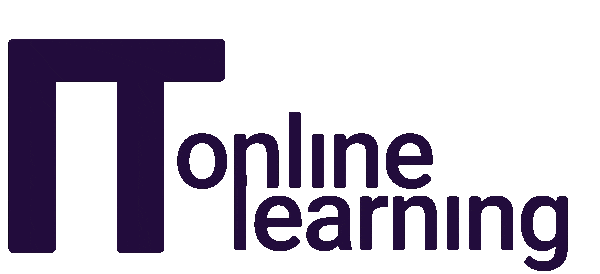What is Six Sigma?
Lean Six Sigma was originally created by Motorola whilst looking to increase their productivity by eliminating manufacturing flaws. It has since grown into a business processes management strategy that is known the world over and is used to streamline business processes in virtually every sector.
The term “Sigma” is derived from the Greek alphabet, and is used to describe a degree of variability. In Six Sigma, these variables are described as defects and are measured in the number of defects per million operations (or DPMO).
In short, a measurement is made as to how often a defect appears after completing a product or part of a product a set number of times. Decreasing the number of defects in relation to the number of products produced ensures that the quality of the product is constantly improved upon.
The different achievable levels of certification for Six Sigma are signified by coloured belts (White, Yellow, Green, Black and Master Black), as is used in the martial arts with each belt offering a higher level of business benefits for the certified individual their organisation alike.
Who uses Lean Six Sigma?
In it’s formative years, Lean Six Sigma was primarily used by companies involved in complex manufacturing processes to ensure that any defects detected in the manufacturing process were quickly rectified in a disciplined and quantitive manner. Just a few of the areas that it is used in today, however, are:
Engineering
• Shipping and Receiving
• Research and Development
• Customer Service
• Administration
• Documentation Control
• Sales and Marketing
• Prevention of Pollution
Lean Six Sigma is used wherever business processes are applicable. There is a strong focus on the end product, ensuring that the product is of a desired level of quality and in reproducing that product, there is no decline and, in fact, rather a desired improvement in quality.
Lean Six Sigma White Belt
This is very much an introductory course and does not require you to write an exam after completing your training. Typically delivered in about 4 hours, the White Belt training aims to teach students the following:
• Lean Six Sigma method overview
• Lean Six Sigma roles
• Introduction to variability
This will teach you a very basic understanding of Lean Six Sigma, the DMAIC (Define, Measure, Analyse, Improve and Control) model and it’s processes and will impart knowledge on reducing resources wastage.
The Lean Six Sigma White Belt is the perfect starting block from which to launch your studies into Six Sigma’s higher levels of training and certification. It will build a foundation of knowledge that will ready you for the more complex and involved training on offer when progressing in your studies of Six Sigma.
Lean Six Sigma Yellow Belt
The Lean Six Sigma Yellow Belt level of training teaches a firm understanding of the methods used in Six Sigma and aims to ready the student for participation in Lean Six Sigma projects. Lean Six Sigma Yellow Belt holders are seen as having the ability to support Green and Black belt certified professionals as far as subject matter expertise is concerned and are also expected to identify chances of business improvement within their respective organisations.
While undertaking the Lean Six Sigma Yellow Belt training, the student will learn:
• Process improvement methods
• The DMAIC improvement model
• Problem solving
• Identification of improvement opportunities
• Basic Improvement process concepts
• Analysis of value
• Change management
Although there are no prerequisites to studying the Lean Six Sigma Green belt certification, the Lean Six Sigma Yellow Belt certification is seen as a gateway to the Green Belt level of training seeing as it teaches the fundamentals of the method.
The following are examples of positions that you will qualify for after gaining a Lean Six Sigma Yellow Belt certification:
• Continuous Improvement Manager
• Production Team Leader
• Manufacturing Team Leader
• Business Analyst
• Business Process Analyst
• Business Consultant
Lean Six Sigma Green Belt
Having learned the DMAIC improvement model during the Yellow Belt training, the Lean Six Sigma Green Belt certification will teach the student to utilise it in a practical environment. Upon completion of the Green Belt certification, you will be able to lead a small project or assist in a more practical role during more complex or larger projects.
Some of what will be taught during Lean Six Sigma Green Belt training includes:
• Lean Six Sigma projects and teams basics
• Process analysis
• Customer analysis
• Modelling processes
• Data collection
• Data Summarising
• Management tools
• Planning tools
The Green Belt professional will have their leadership qualities come into play at this level as they will be expected to make decisions during a project and lead a project team. They will also be expected to gather the data that is needed during the management of a project and will need to validate the measuring system.
The Lean Six Sigma Green Belt certification readied students to apply for positions like:
• Production Manager
• Operations Manager
• Business Process Analyst
• Development Engineer
• Project Engineer
• Senior IT Project Manager
Lean Six Sigma Black Belt
After completing the Lean Six Sigma Black Belt training and gaining the certification, you will be well versed in the methodology of Six Sigma and can start taking on projects of all sizes and complexities as a full-time role. You will then also have a complete understanding of the DMAIC method and it’s implementation as well as the use of Lean Six Sigma tools in business process management.
The Lean Six Sigma Black Belt training aims to impart a complete knowledge of:
• Team management
• The basics of statistics
• The Lean method
• Use of process improvement tools
• Problem resolution
• Data collection
• Reducing variability
Being a Black Belt means possessing strong leadership skills and a comprehensive knowledge of the method and principles used in Lean Six Sigma. Black belts are expected to attain results in business processes and may act as a coach to Lean Six Sigma Yellow and Black belt professionals.
Gaining a Lean Six Sigma Black belt certification will qualify you for positions like:
• Process Manager
• Manufacturing Manager
• Quality Assurance Manager
• Manufacturing Process Engineer
• Production Manager
• Programme Manager
Lean Six Sigma Master Black Belt
This is the highest possible level of certification achievable in Lean Six Sigma. Gaining a Lean Six Sigma Master Black Belt certification comes with the prerequisite that you have At least 5 years of experience in the role of a Lean Six Sigma Black Belt or have completed at least 10 Lean Six Sigma Black Belt Projects.
During Lean Six Sigma Master Black Belt training, you will learn about the following:
• Variation
• Non-parametric analysis
• Destructive testing
• Practical experimentation
• Handling attribute responses
• Optimization experiments
• Advanced regression methods
• Handling multi-response experiments
• Distributional analysis
• Advanced SPC methods
Professionals that are Master Black Belts have the ability to implement continuous, successful improvement in business process management and can take on projects of any size. They are statistically analytical, strategic planners and can act as coaches to Lean Six Sigma Black Belt professionals.
A Lean Six Sigma Master Black Belt certification will see you qualify for positions such as:
• Continuous Improvement Manager
• Quality Assurance Specialist
• Manufacturing Process Specialist
• Supplier Quality Engineer
• Continuous Improvement Leader
• Process Specialist
Any business needs a well-designed and thought-out plan (business model) to be successful. Business processes are very much a part of these plans and need to be streamlined to the point where the end product is as flawless as possible, without sacrificing any degree of quality.








